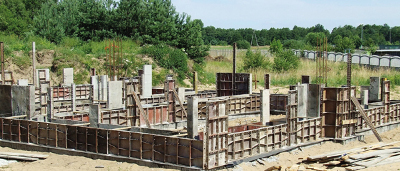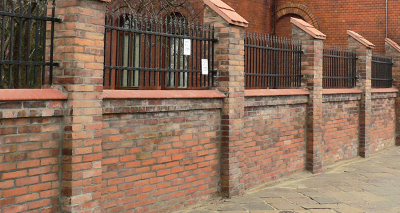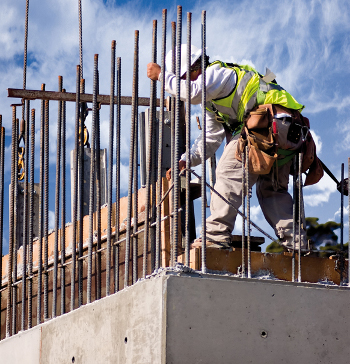
From design to maintenance: earthworks and foundations
If it has been seven days since the notification to the competent construction supervision authority about the commencement of the construction, then we can finally undertake the initial building work, including construction stakeout, earthwork and foundations.

From design to maintenance: design and building permit
Starting from this issue of ”Inżynier Budownictwa” Monthly, we will run a series of English lessons that will present, step by step,all stages of building a home and, consequently, will allow you to develop as well as consolidate English vocabulary related to the construction sector. To begin with, let’s take up the issue of designand building permit.

Building a fence – the law and regulations
In the May issue of “Inżynier Budownictwa” Monthly (5/2014), different types of fencing have been discussed. Continuing this topic, this time I would like to outline the basic regulations and technical requirements one should meet before deciding to build a fence. It is also worth remembering that good relations with neighbours may facilitate and speed up the building process, as well as reduce the cost of the investment.

Industrial flooring
An industrial floor is widely used in factories, warehouses, laboratories, freezers, firehouses as well as many other industrial and commercial buildings. It performs well even in the most demanding conditions, for example, in the chemical, food, paper, pharmaceutical, engineering, automotive, marine and aerospace industries. However, it should be designed such that it meets the highest standards for compressive strength and aesthetics, as well as provides a safe work environment.

Coal – the past or the future?
Coal has long been the major fossil fuel used to produce electricity. Poland relies on coal for almost 90% of its energy supply needs. At the same time, coal-fired power plants,emitting high levels of carbon dioxide into the atmosphere, are one of the largest sources of air pollution and contribute to global climate change. The use of clean coal technologies can help to improve the efficiency of coal plants and reduce emissions of green house gases.

Hydropower – a clean and renewable source of electricity
Hydropower has been exploited by people for ages. Already the ancient Greeks used it to turn water wheels in order to grind grains into flour. This technology has also been used for field irrigation, in sawmills, smithy workshops and tanneries. As a source for generating electricity, hydropower was first used in the late 19th century. Currently, hydroelectric power plants provide almost 20% of the world’s electricity, with China, Canada, Brazil, the United States and Russia being the largest producers of this kind of energy in the world. Interestingly, such countries as Norway or Paraguay rely almost entirely on hydroelectric power. In Poland, although harnessed on a small scale, hydropower is very popular source of renewable energy.

Prestressed concrete – why is it back in fashion?
Concrete is a construction material that can be found on each and every construction site. Depending on the type and proportions of ingredients in the mixture, there are many different kinds of concrete. In addition, new technologies, modern admixturesand mineral additives bring about a continuous improvement of its properties. A good example is prestressed concrete, the use of which helps to overcome concrete’s major weakness, which is insufficient tensile strength. This technology was developed in 1928 by Eugène Freyssinet. Today, prestressed concrete is widely used in the construction industry.

Lightning protection for buildings
On average there are 2,000 thunderstorms occurring at any one time around the world, with about 100 lightning strikes every second. A lightning bolt heats up the air around it to 30,000oC, five times hotter than the surface of the sun. No wonder that, in a split second, a lightning strike can cause severe damage to a building’s structure and its internal electronic systems and appliances, as well as put our lives and health at risk.

Brush up your English and get ready for your travel abroad
When travelling abroad, knowing English is a great advantage, if not a must. No matter whether you are visiting an English-speaking country or not, travelling for business or pleasure, you often find yourself needing English to speak to hotel staff, officials at the airport, taxi drivers, or simply people on the street.

Home fencing – different types and materials
Fencingis one of the key elements while building a home. Not only is it the face of your property, but it also marks its boundary, gives a sense of privacy and security, as well as protects against noise, dust, fumes and uninvited guests. Then one should take care of its proper selection and installation. Fencing should match the design and style of the building, be resistant to weather and mechanical damage, and serve the household for many years. Finally, the type of fencing you choose depends largely on your preferences and budget. One thing is certain – with such a variety of fencing materials, styles, colours and patterns, everyone will find something suitable.
- < poprzednia
- 1
- 2
- …
- 10
- 11
- 12
- …
- 17
- 18
- następna >




